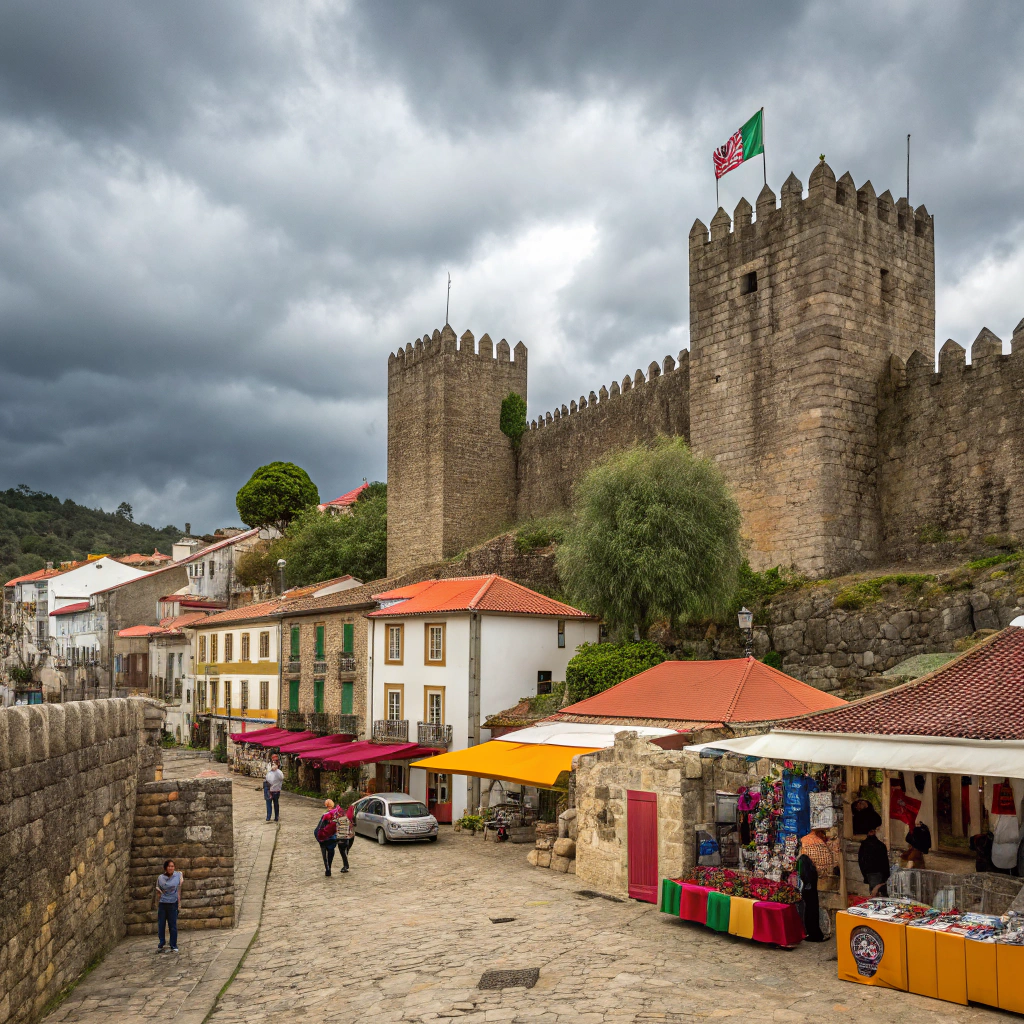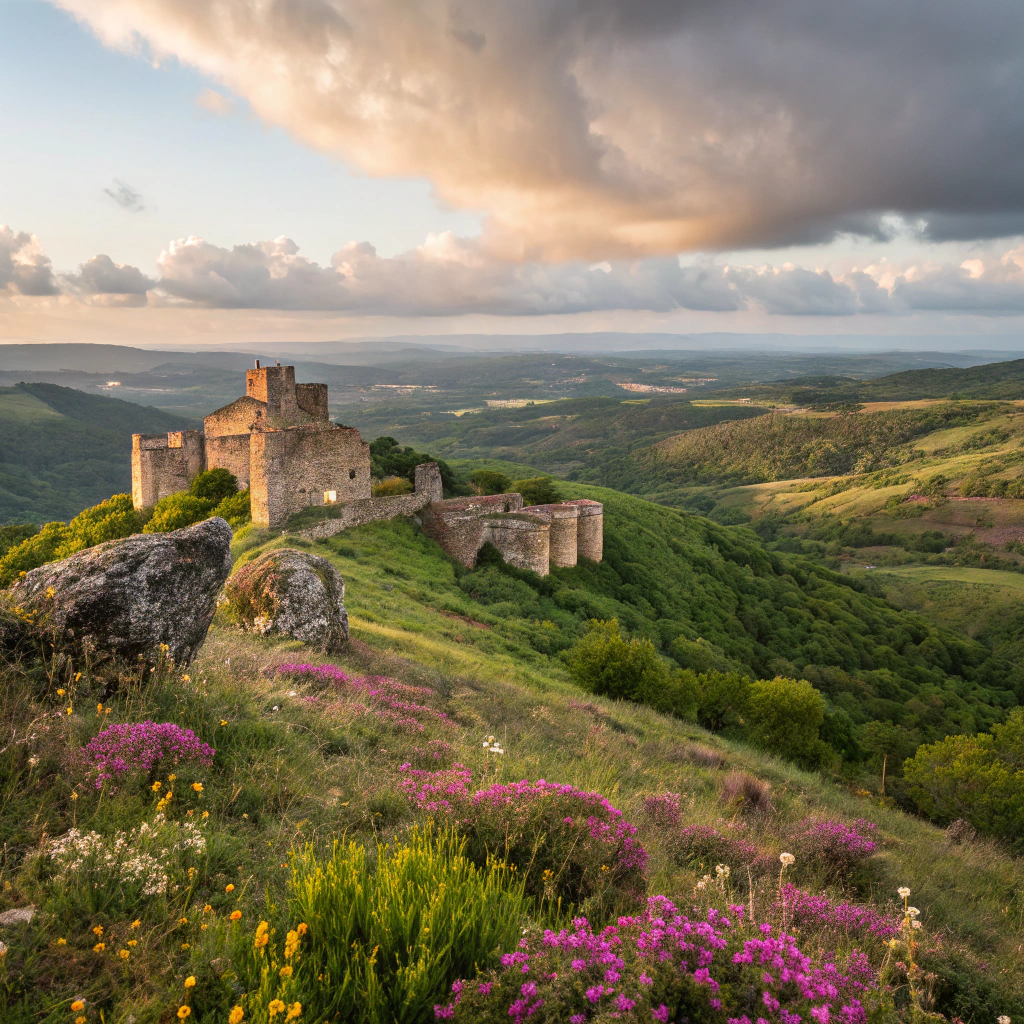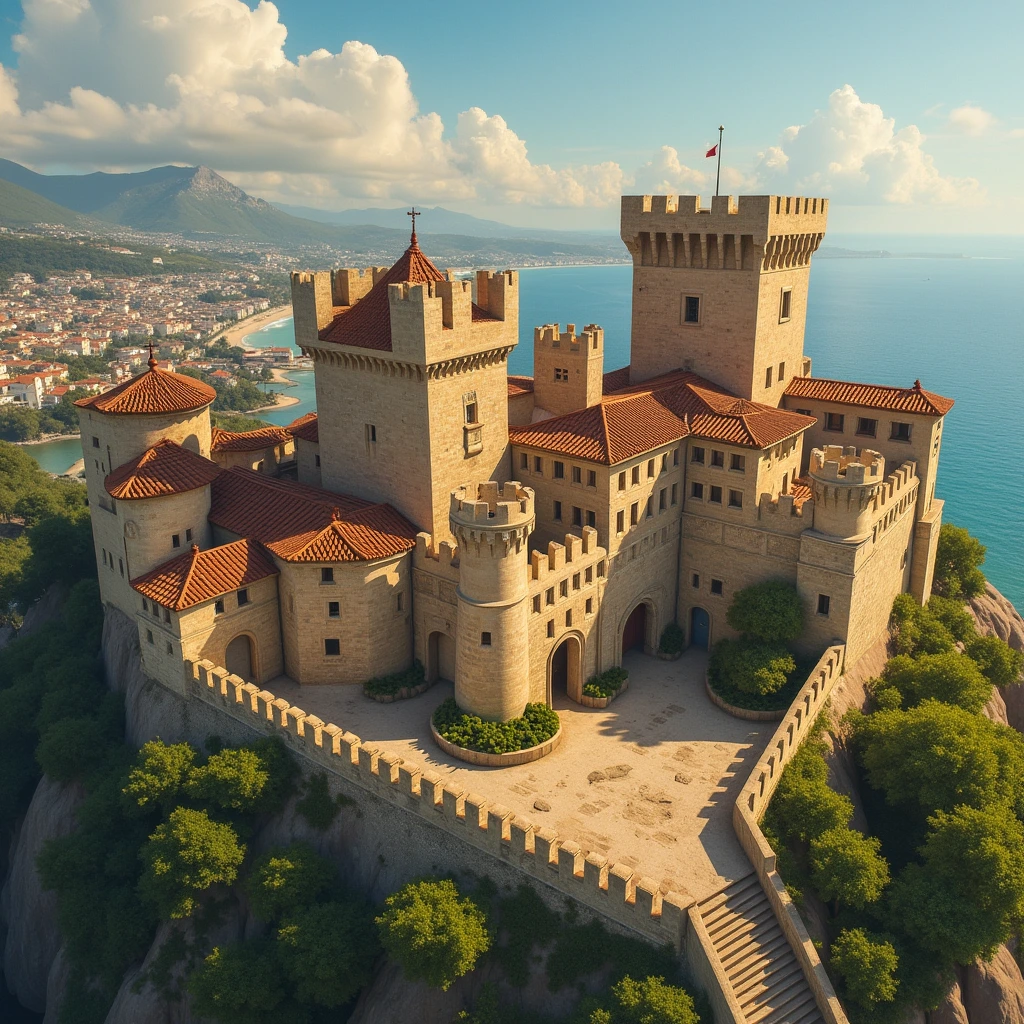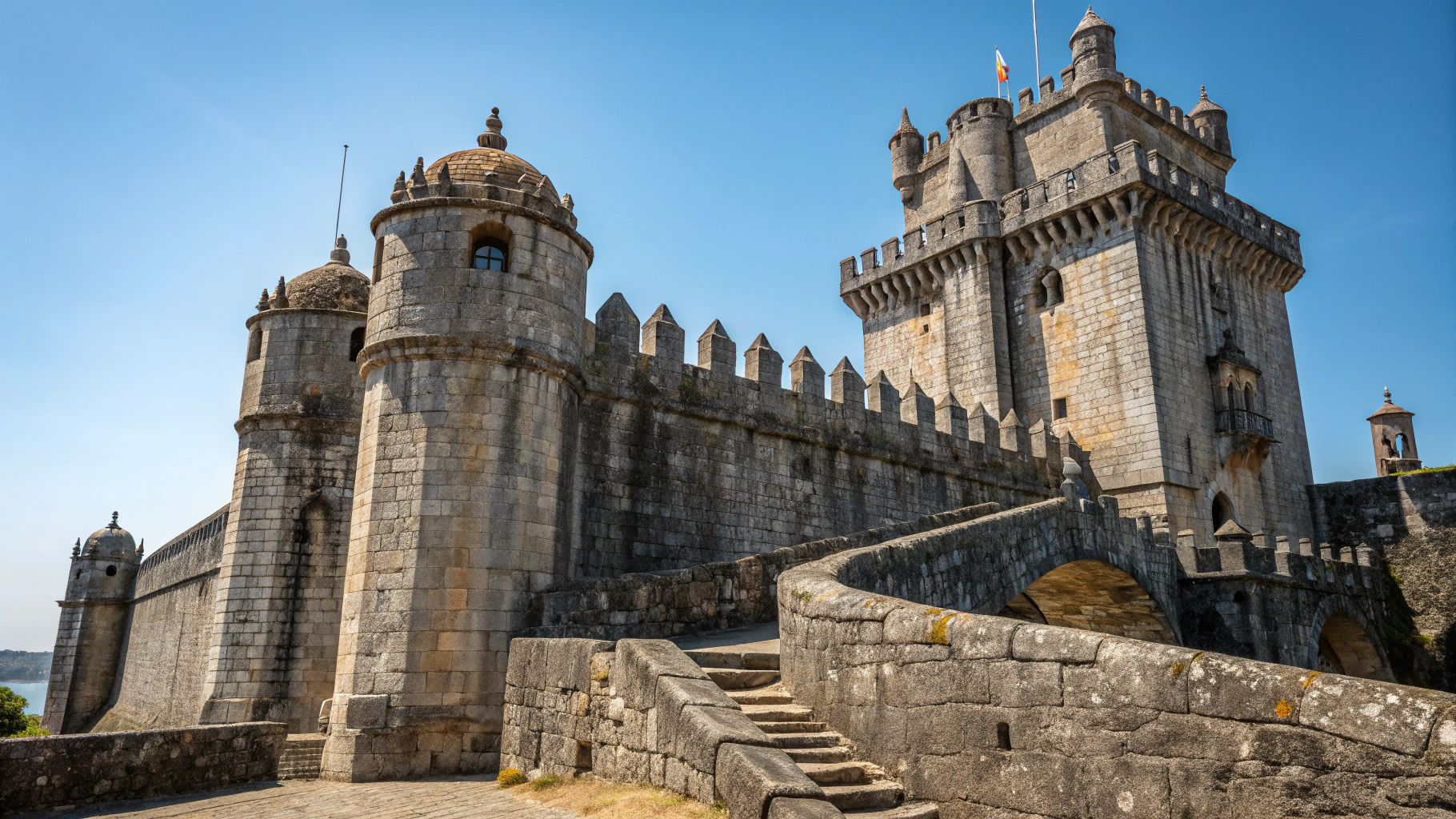Exploring Portugal’s Medieval Heritage: A Journey Through Time
Portugal’s landscape is adorned with magnificent castles that stand as silent witnesses to the country’s rich and tumultuous history. From the northern borders with Spain to the sun-drenched southern coast of the Algarve, portugal castles tell stories of conquest, defense, and cultural evolution spanning over eight centuries. These medieval fortresses, once crucial military strongholds, now serve as captivating tourist attractions and windows into Portugal’s past.
The allure of historic castles in Portugal goes beyond their imposing stone walls and strategic positions. Each fortress represents a chapter in the nation’s narrative, from the early Christian reconquest to the establishment of Portugal as a sovereign kingdom and its emergence as a maritime power. Whether you’re a history enthusiast, architecture lover, or simply seeking breathtaking views, Portugal’s castellated landscape offers unforgettable experiences.
Table of Contents
In this comprehensive guide, we’ll take you through 13 of the most impressive medieval castles in Portugal, exploring their unique features, historical significance, and practical information for visitors. From world-famous landmarks to hidden gems, prepare to discover the stone sentinels that have guarded Portuguese lands since the Middle Ages.
The Castle of São Jorge: Lisbon’s Majestic Crown
History and Strategic Importance: Portugal Castles
Perched atop Lisbon’s highest hill, the Castle of São Jorge (São Jorge Castle) stands as the most iconic of all portugal castles. Its origins date back to the 1st century BCE, but the fortress we see today largely results from Moorish construction during the 11th century. After Portuguese forces led by King Afonso Henriques recaptured Lisbon in 1147, the castle served as the royal residence until the early 16th century.
The strategic importance of São Jorge Castle cannot be overstated. Commanding panoramic views of the Tagus River and surrounding landscape, it provided an essential defensive position for controlling maritime access to the city. The castle’s eleven towers formed an impenetrable barrier against invaders, while its elevated position made it a perfect observation post.
What Visitors Can Experience Today: Portugal Castles
Today, São Jorge Castle ranks among the most popular castles near Lisbon Portugal, attracting over a million visitors annually. The sprawling complex invites exploration through its well-preserved walls, towers, and courtyards. Don’t miss the Camera Obscura in the Tower of Ulysses, offering a 360-degree real-time view of the city through a periscope.
Archaeological excavations have revealed layers of history within the castle grounds, including remnants from Visigothic and Islamic occupations. The on-site archaeological museum displays artifacts dating back to the 7th century BCE. For the best experience, allocate at least two hours to fully appreciate this historical treasure and the breathtaking views of Lisbon’s red-tiled rooftops stretching to the river.
Pena Palace: Romantic Splendor in Sintra
From Monastery to Royal Retreat: Portugal Castles
While technically a palace rather than a traditional fortress, no discussion of portugal castles would be complete without mentioning Pena Palace. Located in the lush hills of Sintra, just 25 kilometers from Lisbon, this UNESCO World Heritage Site epitomizes Portuguese Romanticism in architecture. The palace originated as a chapel and monastery in the Middle Ages before being transformed into a summer residence for the Portuguese royal family in the 19th century.
King Ferdinand II, a German prince who married into the Portuguese royal family, commissioned the conversion of the ruined monastery into an eclectic palace. Completed in 1854, Pena Palace blends Neo-Gothic, Neo-Manueline, Neo-Islamic, and Neo-Renaissance elements, creating a fairytale appearance that seems plucked from imagination rather than reality.
Architectural Marvels and Surrounding Gardens: Portugal Castles
The palace’s exterior features vibrant yellows and reds, with intricately decorated battlements, mythological statues, and elaborate tile work. Inside, visitors can explore royal apartments furnished exactly as they were when the Portuguese monarchy fled during the 1910 revolution.
Equally impressive are the palace gardens, spanning 200 hectares of exotic plants from around the world. Ferdinand II, an amateur botanist, personally oversaw the creation of this romantic landscape, which includes hidden pathways, ornamental features, and stunning viewpoints. Pena Palace has become one of the must-see castles in Portugal, drawing crowds who marvel at its whimsical architecture and breathtaking setting among the clouds.

Guimarães Castle: Birthplace of a Nation
The Cradle of Portuguese Identity: Portugal Castles
Guimarães Castle holds a special place in Portugal’s national identity as the birthplace of both the country’s first king and the nation itself. This medieval castle in Portugal dates back to the 10th century when Countess Mumadona Dias ordered its construction to protect a monastery from Viking and Moorish raids. The fortress was later expanded by Henry of Burgundy, whose son, Afonso Henriques, was born here around 1109.
Afonso Henriques would go on to become Portugal’s first king after declaring independence from the Kingdom of León. The famous battle of São Mamede, fought near the castle in 1128, marked the beginning of Portuguese sovereignty. For this reason, Guimarães Castle is often called “the cradle of Portugal,” and the city itself bears the inscription “Here Portugal was born” on its ancient walls.
Architectural Features and Visitor Experience: Portugal Castles
The castle exemplifies Romanesque military architecture with its square layout, imposing stone walls, and eight rectangular towers. The keep (Torre de Menagem), standing 28 meters tall, remains the most striking feature and offers spectacular views of Guimarães and the surrounding countryside for those willing to climb its stairs.
Walking through this ancient castle in Portugal provides a tangible connection to the nation’s origins. The sparse interior preserves the austere military character of medieval fortifications. Located in the historic center of Guimarães (another UNESCO World Heritage Site), the castle forms part of a remarkable medieval complex that includes the Palace of the Dukes of Bragança and the small Romanesque chapel of São Miguel, where tradition holds that Afonso Henriques was baptized.
Óbidos Castle: A Medieval Village Encircled by History
From Royal Wedding Gift to Tourist Haven: Portugal Castles
Perhaps the most romantic story among portugal castles belongs to Óbidos. In 1282, King Dinis presented the entire walled town, including its magnificent castle, to his bride Queen Isabel of Aragon as a wedding gift. This began a tradition of Portuguese kings giving Óbidos to their queens, earning it the nickname “Wedding Present Town” through centuries of royal ownership.
The castle’s origins predate this royal gesture, with fortifications built by the Moors in the 8th century. After the Christian reconquest in 1148, successive Portuguese monarchs strengthened and expanded the defensive structures, creating the impressive circuit of walls that completely encircles the whitewashed village within.
The Charm of a Walled Town: Portugal Castles
What makes Óbidos unique among historic castles in Portugal is the intact medieval village contained within its walls. Visitors can walk the entire perimeter along the top of the crenelated battlements, enjoying views of terra-cotta rooftops inside and the surrounding countryside outside. The 1.5-kilometer circuit includes steep sections and narrow passages but rewards adventurers with unparalleled photo opportunities.
The castle itself now houses a luxury pousada (historic hotel), allowing guests to experience authentic medieval accommodations with modern comforts. The village streets, too narrow for cars and lined with bougainvillea-draped houses, transport visitors to an earlier era. Throughout the year, Óbidos hosts several festivals, including a medieval fair in July and a Christmas village in winter, making it one of the most visitor-friendly famous forts in Portugal.
Belem Tower: Portugal’s Maritime Sentinel
Guardian of Lisbon’s Harbor: Portugal Castles
Standing gracefully in the Tagus River, the Belém Tower (Torre de Belém) represents the pinnacle of Manueline architecture and Portugal’s Age of Discoveries. Built between 1514 and 1520 during the reign of King Manuel I, this UNESCO World Heritage Site functioned both as a defensive fortress and ceremonial gateway to Lisbon.
Unlike most inland medieval castles in Portugal, Belém Tower was designed specifically for artillery warfare. Its innovative design included multiple levels of cannon emplacements and strategic positioning in the river to create crossfire with other defensive structures. The tower’s military importance gradually diminished over centuries as the river’s changing course left it closer to shore than originally intended.
Architectural Splendor and Symbolism: Portugal Castles
The Belém Tower’s relatively small size belies its architectural significance. The structure combines Gothic military elements with ornate Manueline decoration that celebrates Portugal’s maritime achievements. Limestone carvings feature nautical motifs like twisted rope, maritime instruments, and exotic discoveries from overseas territories.
Among the most striking elements are the rhinoceros gargoyle (inspired by the first rhino brought to Portugal from India in 1513), Islamic-influenced watchtowers, and the bastion terrace decorated with royal shields. Inside, visitors can explore five floors connected by a narrow spiral staircase, ending at a rooftop terrace offering panoramic views of the Belém district and river. Though technically more a fortified lighthouse than a traditional castle, Belém Tower ranks among the most photographed and recognized portugal castles worldwide.
Castle of the Moors: Sintra’s Misty Fortress
Ancient Fortifications with Spectacular Views: Portugal Castles
Predating its famous neighbor Pena Palace, the Castle of the Moors (Castelo dos Mouros) represents a more traditional military fortress among the portugal castles in Sintra. Constructed during the 8th and 9th centuries by North African Moors, this stone sentinel controlled the Atlantic approaches to Lisbon until Christian forces recaptured it in 1147.
The castle’s strategic position atop a steep hill afforded defenders a commanding view of potential invasions from both land and sea. After the Christian reconquest, the fortress retained military importance until the 14th century, when it began a long period of abandonment. The devastating 1755 Lisbon earthquake further damaged the structures, and the castle remained largely forgotten until the 19th century when Ferdinand II began restoration efforts as part of his Sintra romantic landscape project.
Hiking Through History in Sintra: Portugal Castles
Today’s visitors to this ancient Portugal Castles experience a unique blend of rugged military architecture and natural beauty. The fully restored stone walls zigzag dramatically across the hilltop, following the natural terrain. Five main towers connected by walkable ramparts offer increasingly impressive views as you climb higher, culminating in a breathtaking panorama across Sintra’s forested hills to the distant Atlantic Ocean.
Unlike many Portuguese castles with intact interior spaces, the Moorish Castle consists primarily of walls, cisterns, and foundations of former structures. This open-air quality, combined with frequent atmospheric mist rolling through the battlements, creates an eerily beautiful experience. The castle grounds also include an interpretive center with archaeological findings and a small chapel built after the Christian conquest. Many visitors combine this castle with nearby Pena Palace as part of a full-day exploration of Sintra’s magical landscape.

Almourol Castle: The Templar Island Fortress
Knights Templar Legacy: Portugal Castles
Rising dramatically from a small island in the Tagus River, Almourol Castle (Castelo de Almourol) represents one of the most picturesque and romantically situated portugal castles. This medieval fortress, located about 30 kilometers from Tomar, owes its current form to the Knights Templar, who reconstructed it around 1171 after the Christian reconquest of central Portugal.
The site’s strategic importance predates the Templars, with evidence of Roman and Moorish fortifications. However, it was under Gualdim Pais, Provincial Master of the Knights Templar in Portugal, that Almourol gained its distinctive character. The castle formed part of the Templars’ defensive line protecting Christian territories from Moorish incursions from the south, alongside other fortresses like Tomar and Monsaraz.
Myths, Legends, and Visitor Experience: Portugal Castles
Almourol’s isolated island position has contributed to its mystical reputation and the legends surrounding it. Local folklore tells of Moorish princesses, hidden treasures, and ghostly Templar knights still guarding ancient secrets. The castle’s silhouette against sunset skies creates one of Portugal’s most photogenic landscapes.
Visiting this historic castle in Portugal requires a short boat ride from the riverbank, adding to the adventure. The modest-sized fortress features a rectangular outer wall with nine towers and a central keep. While the interior contains few structures, the experience of walking these ancient walls while surrounded by water on all sides creates an unforgettable impression. Almourol perfectly embodies the romantic image of a medieval castle and remains one of the best-preserved examples of Templar military architecture in Portugal.
Marvão Castle: Portugal’s Eagle Nest
A Frontier Fortress in the Clouds: Portugal Castles
Perched atop a 860-meter granite peak near the Spanish border, Marvão Castle (Castelo de Marvão) represents the quintessential frontier fortress among portugal castles. This eagle’s nest commands spectacular views across the Alto Alentejo region and into neighboring Spain, making it strategically vital throughout Portugal’s history of border conflicts.
The site’s defensive potential was recognized as early as Roman times, but the current fortification dates primarily to the 13th century during the reign of King Dinis. Subsequent monarchs enhanced the defenses, with major expansions in the 17th century during the Portuguese Restoration War against Spain. The castle’s position made it virtually impregnable—the renowned military engineer Duarte de Armas declared in the 16th century that Marvão was “the strongest place that can be found in the kingdom.”
Remote Beauty and Border History: Portugal Castles
Today’s visitors to Marvão experience one of the most complete and well-preserved medieval castles in Portugal. The impressive complex features massive walls, towers, a keep, and cisterns designed to withstand lengthy sieges. The battlements offer 360-degree views that on clear days extend more than 60 kilometers in all directions.
What makes Marvão particularly special is the entire walled village contained within its outer defenses. The narrow, winding streets lined with whitewashed houses remain largely unchanged for centuries. Despite its remote location in Portugal’s interior, Marvão rewards travelers with a genuine step back in time. The castle’s museum houses artifacts spanning thousands of years of human settlement in this strategic location, from prehistoric tools to medieval weapons and everyday objects from village life across the centuries.
Exploring Lesser-Known Portuguese Castles
Silves Castle: The Red Giant of the Algarve – Portugal Castles
While the Algarve region is better known for beaches than battlements, Silves Castle (Castelo de Silves) stands as the most impressive of southern portugal castles. This massive red sandstone fortress crowns the ancient capital of Moorish Algarve, where it served as both military stronghold and luxurious residence for Islamic governors before the Christian reconquest in 1249.
Covering nearly 12,000 square meters, Silves features massive walls reaching 18 meters high, eleven towers, and two gate houses. The castle’s distinctive reddish hue comes from the local sandstone and taipa (a mixture of mud, lime, and stone) construction techniques brought by North African builders. Inside, archaeological excavations have revealed living quarters, baths, and water cisterns that demonstrate advanced engineering for their time.
Visitors exploring this famous fort in Portugal can walk the complete circuit of walls, descend into the impressive cistern, and enjoy panoramic views of the surrounding countryside. The annual Medieval Festival in August transforms the castle into a vibrant recreation of its historical past, with period costumes, crafts, and performances.
Leiria Castle: Royal Elegance in Central Portugal – Portugal Castles
Rising majestically above the city of Leiria, this elegant fortress represents a unique blend of military functionality and royal comfort rarely seen in historic castles in Portugal. Initially built as a defensive structure in the 12th century under King Afonso Henriques, Leiria Castle evolved into a preferred royal residence during the 14th century when King João I and Queen Philippa of Lancaster transformed it with Gothic palace apartments.
The castle’s most distinctive feature is its loggia—an elegant series of arched windows offering panoramic views while flooding the royal quarters with light. This architectural element represents an early transition from purely defensive structures to more comfortable palatial residences. The keep, church of Nossa Senhora da Pena, and remaining baileys demonstrate the original military purpose.
Today, carefully restored sections allow visitors to appreciate both the defensive architecture and the royal living spaces. Leiria Castle’s location midway between Lisbon and Porto makes it an accessible stop for travelers exploring central Portugal and seeking alternatives to more crowded castles.

Planning Your Portuguese Castle Expedition
Best Seasons for Castle Exploration: Portugal Castles
Timing your visit is crucial for the optimal experience of portugal castles. While these stone sentinels stand ready for visitors year-round, each season offers distinct advantages and challenges:
Spring (March-May): Perhaps the ideal time for castle exploration, with comfortable temperatures, wildflowers blooming around fortress walls, and fewer crowds than summer months. The verdant landscapes create stunning backdrops for castle photography.
Summer (June-August): Peak tourist season brings longer daylight hours for exploration but also larger crowds and potentially uncomfortably hot temperatures, particularly in inland regions. Many castles host medieval fairs and historical reenactments during summer.
Autumn (September-November): A wonderful alternative to summer, with mild weather, reduced visitor numbers, and beautiful lighting for photography as the sun sits lower in the sky.
Winter (December-February): For the dedicated castle enthusiast, winter offers the most authentic medieval atmosphere—misty mornings, dramatic skies, and often complete solitude at remote fortresses. Coastal castles experience strong Atlantic winds, while inland and northern portugal castles might see occasional snow, creating magical scenes.
Transportation and Practical Considerations: Portugal Castles
Exploring portugal castles requires thoughtful planning, as many fortresses occupy remote or elevated positions:
Rental Car: Offers maximum flexibility for visiting multiple castles, especially those in rural locations. Portugal’s modern highway system makes travel between major cities efficient, though reaching mountain fortresses often involves narrow, winding roads.
Public Transportation: Many major castles near urban centers (São Jorge, Óbidos, Guimarães) are accessible by train or bus from Lisbon or Porto. For more remote locations, combining public transportation with local taxis may be necessary.
Guided Tours: Numerous companies offer specialized Portugal castle tours, ranging from day trips focusing on castles near Lisbon to week-long itineraries covering fortifications across the country. These tours provide historical context and eliminate logistical challenges.
Physical Considerations: Most historic castles in Portugal involve significant walking on uneven surfaces, steep stairs, and narrow passages. Comfortable footwear and a moderate fitness level enhance the experience. Accessibility varies greatly, with urban castles typically offering better accommodations for visitors with mobility limitations.
FAQ: Your Questions About Portugal Castles Answered
How many castles are there in Portugal?
Portugal boasts over 150 castles and fortifications spread across its relatively small territory, ranging from perfectly preserved monuments to atmospheric ruins. This dense concentration of defensive structures reflects Portugal’s strategic position on the Iberian Peninsula and its need to establish and defend its borders throughout history. While this guide highlights 13 of the most impressive examples, castle enthusiasts could spend months exploring the full range of medieval castles in Portugal from the northern mountains to the southern coast.
What is the oldest castle in Portugal?
Guimarães Castle claims the title of oldest surviving castle structure in Portugal, with its origins dating to the 10th century under Countess Mumadona Dias. However, many portugal castles stand on sites with much older defensive structures, some dating back to pre-Roman times. Archaeological evidence shows that humans have fortified strategically advantageous positions throughout Portuguese territory for thousands of years, with each successive civilization—Celtic, Roman, Visigothic, Moorish, and Portuguese—adapting existing structures or building new fortifications.
Are Portuguese castles different from other European castles?
Portuguese castle architecture developed unique characteristics influenced by the country’s position, climate, and history. While northern medieval castles in Portugal share similarities with Spanish and French designs (thick walls, square keeps), those in central and southern regions show strong Moorish influences, including taipa construction techniques, albarrana towers, and sophisticated water storage systems. Portugal’s castles often feature adaptations to the hot climate, such as larger windows and courtyards, compared to northern European counterparts. Additionally, Manueline decorative elements (found in later renovations) represent a distinctly Portuguese architectural signature.
What is the best castle to visit near Lisbon?
For travelers with limited time, São Jorge Castle offers the most convenient and impressive castle experience within Lisbon itself. However, several exceptional castles near Lisbon Portugal make excellent day trips. Sintra (30km) features both the Castle of the Moors and Pena Palace. The walled town of Óbidos (80km) delivers the most complete medieval experience. For something less crowded, Almourol Castle (120km) provides a uniquely romantic setting on an island. Each offers distinct architectural styles and historical contexts, making the “best” choice dependent on individual interests in military history, royal palaces, or picturesque settings.
Do I need reservations to visit Portugal’s castles?
Most portugal castles operate on a first-come, first-served basis without requiring advance reservations, though this is changing at popular sites. Major attractions like Pena Palace and São Jorge Castle now strongly recommend online booking, especially during peak season (June-September) when wait times without reservations can exceed two hours. Castle hotels (pousadas) like Óbidos and Palmela require accommodation reservations months in advance. For a stress-free experience, check official websites before visiting major castles, particularly if traveling during summer or holidays.
Can you stay overnight in any Portuguese castles?
Yes! Portugal’s innovative pousada program has converted several historic castles in Portugal into luxury hotels while preserving their historical character. Notable castle accommodations include Óbidos (the entire village within castle walls), Palmela (overlooking Arrábida Natural Park), Estremoz (a 13th-century fortress), and Alvito (a 15th-century fortified palace). These properties offer the extraordinary experience of staying within authentic medieval walls while enjoying modern amenities. Beyond official pousadas, numerous boutique hotels and vacation rentals operate in buildings attached to castle walls or within walled towns, providing additional options for immersive historical overnight experiences.
Conclusion: The Enduring Legacy of Portugal’s Stone Sentinels
Portugal’s castles stand as powerful reminders of the country’s rich and complex past. From Moorish citadels to Templar strongholds, royal residences to frontier fortifications, these stone monuments have witnessed the birth and evolution of Europe’s oldest nation-state. More than mere defensive structures, portugal castles embody the cultural identity, artistic achievements, and strategic thinking of generations of Portuguese people.
For today’s travelers, these fortresses offer far more than history lessons. They provide unparalleled views across dramatic landscapes, photogenic backdrops for creating lasting memories, and tangible connections to a medieval world that often seems distant in our modern lives. Whether you’re ascending the ramparts of São Jorge in Lisbon, crossing the drawbridge at Óbidos, or sailing to the island fortress of Almourol, each castle visit creates a unique sense of discovery and wonder.
The strategic genius, architectural innovation, and cultural significance of historic castles in Portugal continue to inspire visitors from around the world. As you plan your Portuguese adventure, consider making these magnificent fortresses centerpieces of your itinerary. In their weathered stones and commanding positions, you’ll discover not just Portugal’s past, but a deeper appreciation for the forces that shaped European history and the ingenious ways humans have defended what they value most across the centuries.



